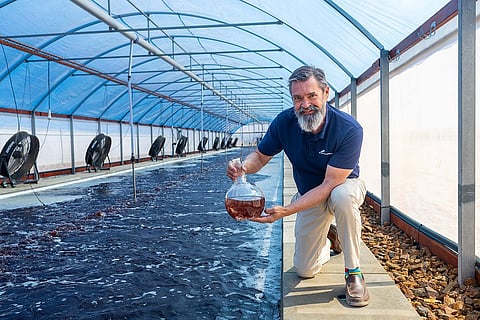

CH4 Global CEO Dr. Steve Meller describes asparagopsis seaweed as "the safest, most effective way to reduce methane emissions from cattle".
Photo: CH4 Global
Seaweed feed supplement company CH4 Global has announced its land-based seaweed growing facility in Louth, Southern Australia, is now operational.
The company, which produces the red seaweed species Asparagopsis for animal feed as a way of reducing methane emissions from cattle farming, uses a pond-based system which it claims reduces production costs by up to 90% compared to conventional tank-based methods.
“The opening of this facility lays to rest any doubt about whether Asparagopsis production can be scaled to meet commercial demand," CH4 Global CEO and Co-Founder Dr Steve Meller said in a press release announcing the official opening of the facility. "We've cracked the code on making methane-reducing feed supplements commercially viable without requiring government subsidies – a crucial step in scaling this important climate solution," he added.
The company's EcoPark currently comprises 10 large-scale cultivation ponds with a combined capacity of 2 million litres, which the company says are able to produce more than 80 metric tons of asparagopsis annually.
Over the next year, CH4 Global intends to expand its facility to 100 ponds, enabling it to produce enough Asparagopsis to serve 45,000 cattle per day. The company described this as "a significant step toward meeting demand from CH4 Global's existing commercial partners in Australia and beyond," and indicated it aimed to seek additional investment to enable it to expand to 500 ponds.
“With the EcoPark, CH4 Global now has more production capacity than all other producers combined, putting us in a unique position to meet growing market demand," Meller said, calling asparagopsis seaweed "the safest, most effective way to reduce methane emissions from cattle".
The company claims that its land-based solution enables better operational efficiency and precision control of growing conditions, as well as reduced risk of contamination and weather disruption compared with sea-based farming of seaweed.
